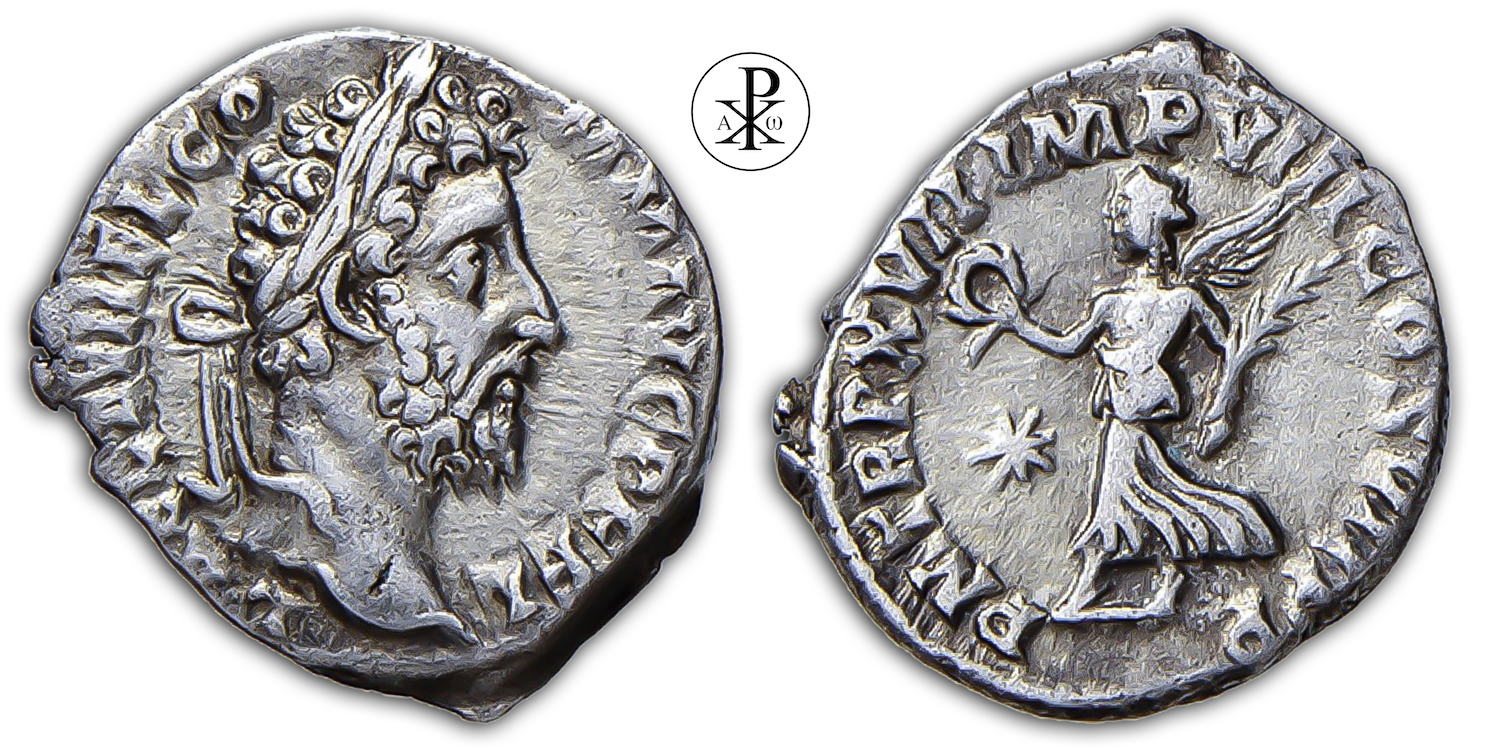Imperator Caesar Lucius Aelius Aurelius Commodus Augustus Pius Felix
Reign: Commodus
Mint: Rome
Date: 192 AD
Nominal: Denarius
Material: Silver
Diameter: 17mm
Weight: 2.82g
Reference: RIC III Commodus 237
OCRE Online: http://numismatics.org/ocre/id/ric.3.com.237
Rare: R1
Provenance: Thesaurus Numismatic, San Marino (Auction 21, Lot 354)
Pedigree: –
Obverse: Head of Commodus, laureate, right
Inscription: L AEL AVREL COMM AVG P FEL
Translation: Lucius Aelius Aurelius Commodus Augustus Pius Felix
Translation: Lucius Aelius Aurelius Commodus, the pious and fortunate Augustus
Reverse: Victory, winged, draped, advancing left, holding wreath in extended right hand and palm, sloped over left shoulder, in left hand; in field, sometimes star
Inscription: P M TR P XVII IMP VIII COS VII P P
Translation: Pontifex Maximus, Tribunicia Potestate Septima Decima, Imperator Octavum, Consul Septimum, Pater Patriae
Translation: High priest, holder of tribunician power for the 17th time, Imperator for the eighth time, consul for the seventh time, father of the nation
Comment: Victoria is the deified personification of victory in Roman mythology, patron goddess of the Roman emperor and virgin guardian of the empire. She is the equivalent of the Greek goddess Nike. She was often depicted flying and with a laurel wreath in her right hand as a symbol of victory. In Roman history, sacrifices were allegedly offered to Victoria early on, according to the ancient writer Dionysius of Halicarnassus as early as the times of the mythical king Euandros, but this is to be regarded as an invention of more recent annalistics. Her temple in Rome was consecrated in 294 BC, according to the Fasti Praenestini on 1 August, by Lucius Postumius Megellus on the occasion of the Third Samnite War. During the Roman Civil Wars, especially by Sulla and Gaius Iulius Caesar, the goddess finally acquired great importance for the ideological stylisation of the respective rulers. Emperor Augustus and his successors during the Principate made targeted use of her and her pictorial representations for their own depiction of rule and power, for example through the Victoria Altar erected in 29 BC as well as numerous Victoria statues.
The coinages of the year 192 AD can be divided into three groups, which were apparently minted one after the other. Group I seems to fall at the beginning of the year. The obverse sides still show the curly head of Commodus with the laurel wreath. The reverse sides show, among others, Fides, Mars, Liberalitas VIII, Pietas, Fortuna and Felicitas. Group II is the so-called Hercules series and seems to have been minted subsequent to Group I. The star, which appeared very often (though not always) on the reverse of the Group I coinage, is now missing throughout. The obverse sides again show the curly head of Commodus with laurel wreath, on the reverse sides we see the standing Hercules. Group III then shows Commodus’ head without exception with the lion’s skin, short-cropped head hair and shorter beard. The reverse sides of this last group are dedicated solely to Hercules Romanus. The Victoria denarius RIC 237 presented here belongs to group I of the year 192 AD. A whole series of different Victoria types appear at the beginning of the year. Possibly Victoria issues already herald the official bestowal of the epithet “Invictus” by the Senate, according to Maria Regina Kaiser-Raiß (the city Roman coinage during the sole rule of Commodus).
